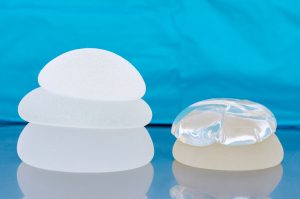 With all of the recent press on textured implants and ALCL, it begged the question for me, when did textured implants first appear on the market?
With all of the recent press on textured implants and ALCL, it begged the question for me, when did textured implants first appear on the market?
Why textured? Textured implants came about because of three basic reasons.
- 1. When you put in a shaped implant or tissue expander, you do not want the implant to rotate.
- 2. There were many studies which indicated lower rates of capsular contracture with textured implants.
- *NOTE: I have always wondered on this point, as there are also many studies indicating textured implants have higher rates of biofilm, and biofilm is linked to capsular contracture.
- 3. Some women have anatomic issues which make a smooth implant higher risk for migration, thinning of the tissue, or visible wrinkling. Texturing helps hold the implant in place. Again, think super thin skin covering or a sloped ribcage and chest wall.
There are differences between the implant companies, and biocell is the texturing of the Allergan brand (previously McGhan/Inamed). My rep sent me a timeline. *Of note: these are the dates the applications were approved per the FDA press release. Also of note, this is the US data. The implants were in Europe at an earlier date.
1986: Biocell implants first available in US. This includes style 133 tissue expanders (used in breast cancer recon)
2000: Natrelle saline filled round and anatomically shaped breast implants with biocell texture
2006: Natrelle Silicone round implants with biocell
2011: Natrelle Tissue expander 133 Plus (used in breast cancer reconstruction)
2013: Natrelle style 410 Anatomically shaped silicone filled breast implants. (*NOTE: this were available in Europe for years ahead of the US)
2016: Natrelle Inspira Soft Touch, cohesive
Please keep in perspective the low risk of ALCL. The risk of breast cancer in the US is 1:8. The risk of ALCL with the Biocell texturing is listed at 1:3200- 1:30,000. The Style 410 was the most popular silicone gel breast implant used in Europe for years, and was released there in 1993, 20 YEARS before we were allowed to use it in the US. See this below from a published journal article about the 10 year study done prior to its appearance in the US.
“The Natrelle 410 breast implant (Allergan, Inc., Irvine, Calif.) is a teardrop-shaped, textured, highly cohesive silicone gel implant designed to mimic the natural slope of the breast.1,2 It was introduced in Europe in 1993 and subsequently approved by the U.S. Food and Drug Administration in 2013.3 The long-term safety and effectiveness of the Natrelle 410 implant are supported by 10-year results from a 10-year, prospective, multicenter study. At 10 years, the risk of capsular contracture with the Natrelle 410 implant was lower than that previously reported with standard round gel implants. Moreover, satisfaction rates of more than 93 percent were achieved among those receiving Natrelle 410 implants for breast augmentation or primary reconstruction, and rates exceeded 87 percent when Natrelle 410 implants were used in revision procedures.” Plastic and Reconstructive Surgery Journal, October 2015
The information provided on this website is for general informational purposes only and does not constitute medical advice, diagnosis, or treatment. Always seek the advice of a qualified healthcare provider for any questions regarding your health or medical condition.
